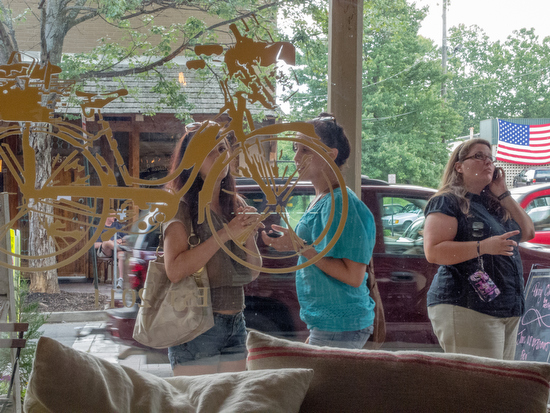“Nowadays people know the price of everything and the value of nothing.”
― Oscar Wilde, The Picture of Dorian Gray
You will never have someone hire you and say they don’t like you. However, just because someone hires you doesn’t mean they want you.
It may shock you that there are people who will hire you just because of your price and not because of your quality.
Photos are just from the beautiful weekend we had here in Georgia.

What is also challenging to understand is that many of your clients will never pay you more? It isn’t because you cannot articulate your value and need to charge more. There are just people out there who do not value anything but price.
When you start in photography, you may end up with price-shopping clients. I had a few of these clients. I needed the work and was willing to take their low price to get some money.
It took me years to realize I wasn’t charging enough for my services to pay my bills. This is how I am defining success for this article. The ability to pay your bills for your household, pay your taxes, have healthcare, and have enough money to buy/replace equipment over time.

Time to Educate the Client
My first thought when I learned I wasn’t charging enough was to try and educate the client. I would talk to my clients about the cost of doing business. News Alert!!–they didn’t care.
I needed to educate myself first. I was starting to learn what my operating costs were and that I had to charge a minimum or lose money to cover these costs and grow my business.
Day Rates
I discovered that day rates were day labor. How I learned was quoting day rates and then showing up to be burned a new one.
Clients would hire me to come to their location, and I would quote the day rate. I felt like I was in the big leagues. I went to professional photographers’ workshops, where I learned about the cost of doing business. The National Press Photographers Association even has a calculator to help you consider all your expenses and generate a day rate.
It didn’t take long before I felt abused by clients. “While you are here, can you shoot …?” was becoming too familiar.
Later I would get with other photographers and find out that they were getting 3 to 5 times more for what I was doing. They, however, were not quoting day rates.
Ken Touchton was the first to educate me that I needed to use project rates.
Project Rate
Unlike a day rate where I am pricing myself the same way as a day laborer, the project rate quoted a price based on the end deliverable.
Honestly, learning how to price a project, so the client understood and appreciated the pricing structure took years; frankly, I am still learning how to do a better job.

GWC vs PS
My career shifted from the Guy With a Camera to a Problem Solver. The client hiring a GWC knows more typically than the photographer and must direct them to get what they need. I cannot tell you a specific date that this happened, but over time I discovered I knew more about what the client required than the client at some point.
My stepson is early in his career working in restaurants. He doesn’t know enough to do it all and is learning the ropes. Clearing tables is where he has had to start. After doing this for a while, he will move to help the waiters and become a waiter.
Hearing him talk about his work day brings back many memories and reminds me how it takes time to become a problem solver. You need enough information and how things relate before you can find solutions for people.
Working for more than 30 years in the industry means that I, more often than not, am covering something I have done in some way in the past. While the exact situation is new, it is often similar to other things I have covered.
While groundbreaking and check presentations seem routine, after 30 years, I can tell you there have been times when I was challenged to take a photo. I remember walking into one business where every wall, except for the bathrooms, was glass. Try and use a flash in this situation, and you find yourself working harder than usual to avoid a glare caused by your moment in the photo.

Transition to clients who value YOU!
In time you will learn to communicate how you are there for your clients. You will no longer price things that make sense to you but rather communicate value to your client.
However, I had to go through what I thought was why people would hire me. Most of these were “Fallacious Arguments” to justify my photography abilities.
Some of “Fallacious Arguments” in photography I used
- The camera—If you own the right camera, they will take great photos. I wanted to ensure the client knew I had the best camera possible.
- Use Composition Rules—Too many photographers will not only learn the classic rules of composition but will judge their work and others based on these rules. You can hear them in camera clubs saying that it isn’t a good photo because it is breaking the law.
- Master the technical—Some photographers are obsessed with the technical details of photos. They will spend their time getting a “perfect exposure.” They will judge their work and others based on if the values of the photograph fall within what they determine as proper exposure. They may argue that their photo is perfect because they used different known values to assure perfection. They may use a GretagMacbeth® ColorChecker®.
I know that, for the most part, I am gifted with technical expertise, but so are many of my colleagues who are working professional photographers.
It is my total package that separates me from others.
One day I had my photo assistant helping me with a job. I was photographing different managers in a company for profiles that were being done on them. I was doing about 20 of these a day.
The photo assistant commented on the day as we were driving back from a long day. You are good at getting people to relax and get good expressions. The assistant was surprised about my ability to talk to a range of people and get them all talking to me about what they like to do.
The assistant could articulate what made my photos so much better than other photographers she had worked with. You get great expressions.
“How do you learn how to do this?” was her question. I talked about how I had majored in Social Work, where I was trained on how to do interviews and get to know people. I then spoke about how my mentor taught me to read body language.
I talked about how my interest in people drove me to seminary, where I studied education, and how people learned at different ages.
I also talked about how it took many years of practice to develop these skills and that classroom alone was not enough.
Hired for my expertise beyond the camera
A few years ago, I had one of my life’s most remarkable moments.
Greg Thompson, director of corporate communications for Chick-fil-A, called me to see if I could do lunch with him one day. We had only known each other a few months after my wife had met him and encouraged him to get to know me.
Greg read my bio and did some investigation about me. He went to Fort Worth, TX, to the Southwestern Photojournalism Conference, of which I am on the staff. He learned about my work with Youth With A Mission, where I taught students how to use photography.
Greg also had been to some Christian in Photojournalism meetings in Atlanta that I help with regularly.
Greg had done his homework and knew me well. Greg had to do this with his work. He knew that he had to trust whoever he was to work with because they represented the company and reflected on his management skills.
I will never forget that meeting in the corporate dining room. After we ate, Greg talked to me about my corporate rates for shooting assignments. I thought he was getting ready to ask me to do a job for him.
Greg then asked me to be a consultant and use all my skills beyond the camera to help him and be a part of his team. I have noticed how you teach, give your time to other pros, and still do excellent work. Greg said why not hire the guy, so many photographers go for advice.

Light bulb moment
While this was a light bulb type of moment, honestly, it was more like I had someone turn on the light with a dimmer. I still understand all he said at that moment.
When I talk to other photographers who have been in business for many years, most have had a moment they can look at as pivotal. They had a client value them for more than GWC. They loved their expertise.
How do you communicate your value?
Everything you do is part of your brand. It takes time to develop a brand. The consistency of execution will help you develop into a desirable brand.
Your photos, over time, will show your skills. When time after time, you always come through and get a particular style of the image–your clients will come to expect this.
Some clients will need to try other photographers before they realize what they get from you. This is important to hear and understand. Sometimes losing a job to another photographer may be the best thing for you. When that photographer fails to deliver what they were getting from you and expect to get, they will come back to you.
This is when you realize you have value for that client. In some cases, this is the best time to raise your rates. Sometimes you raise your rates and then go shopping and return to you.
There is no easy road
My conversation with Greg Thompson didn’t happen until I had been doing photography for some twenty-four years. This is not something that happens overnight. It takes time to build a reputation.
You cannot easily talk people into understanding why they need to pay you the rate you need to be successful. If it were this easy, everyone would be a successful photographer.
It takes time for them to see your quality of work and to experience all that you bring to them. Sometimes the only way they learn all you bring to the table is to discover they cannot get this just anywhere.
Trust is earned over time and can be lost in an instant.
Grow your business by constantly looking for those clients that value you as a person and are not just interested in the lowest price.

